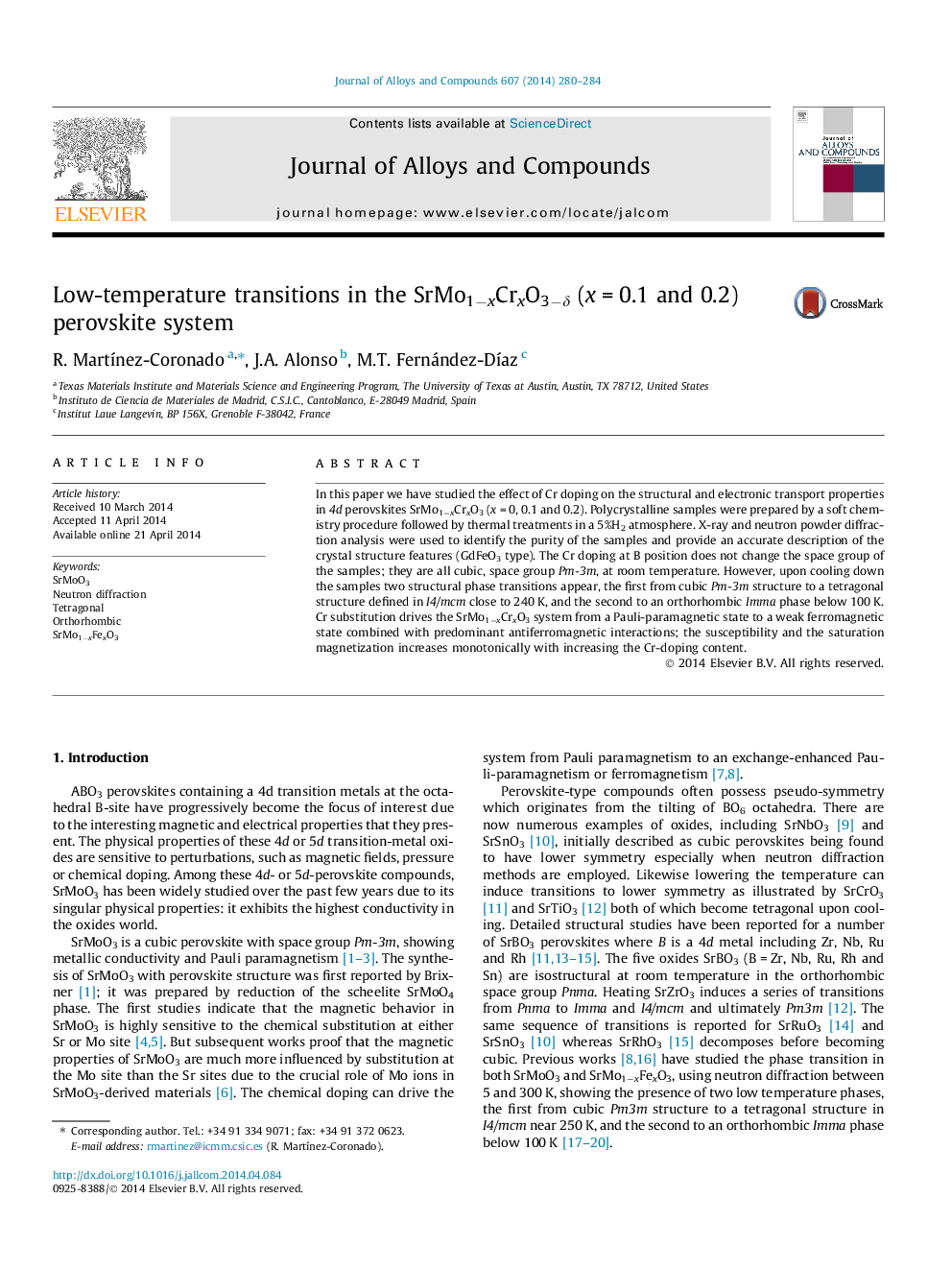| Article ID | Journal | Published Year | Pages | File Type |
|---|---|---|---|---|
| 1610923 | Journal of Alloys and Compounds | 2014 | 5 Pages |
•Neutron diffraction study of SrMo1−xCrxO3−δ (x = 0.1 and 0.2) oxides.•Cooling, two structural transitions are identified, tetragonal and orthorhombic.•DSC curves exhibits an endothermic peak close to 240 K.•Magnetic behavior of the samples changes, inducing a ferromagnetic character.•The tilt angles are appreciably high at low temperatures.
In this paper we have studied the effect of Cr doping on the structural and electronic transport properties in 4d perovskites SrMo1−xCrxO3 (x = 0, 0.1 and 0.2). Polycrystalline samples were prepared by a soft chemistry procedure followed by thermal treatments in a 5%H2 atmosphere. X-ray and neutron powder diffraction analysis were used to identify the purity of the samples and provide an accurate description of the crystal structure features (GdFeO3 type). The Cr doping at B position does not change the space group of the samples; they are all cubic, space group Pm-3m, at room temperature. However, upon cooling down the samples two structural phase transitions appear, the first from cubic Pm-3m structure to a tetragonal structure defined in I4/mcm close to 240 K, and the second to an orthorhombic Imma phase below 100 K. Cr substitution drives the SrMo1−xCrxO3 system from a Pauli-paramagnetic state to a weak ferromagnetic state combined with predominant antiferromagnetic interactions; the susceptibility and the saturation magnetization increases monotonically with increasing the Cr-doping content.
